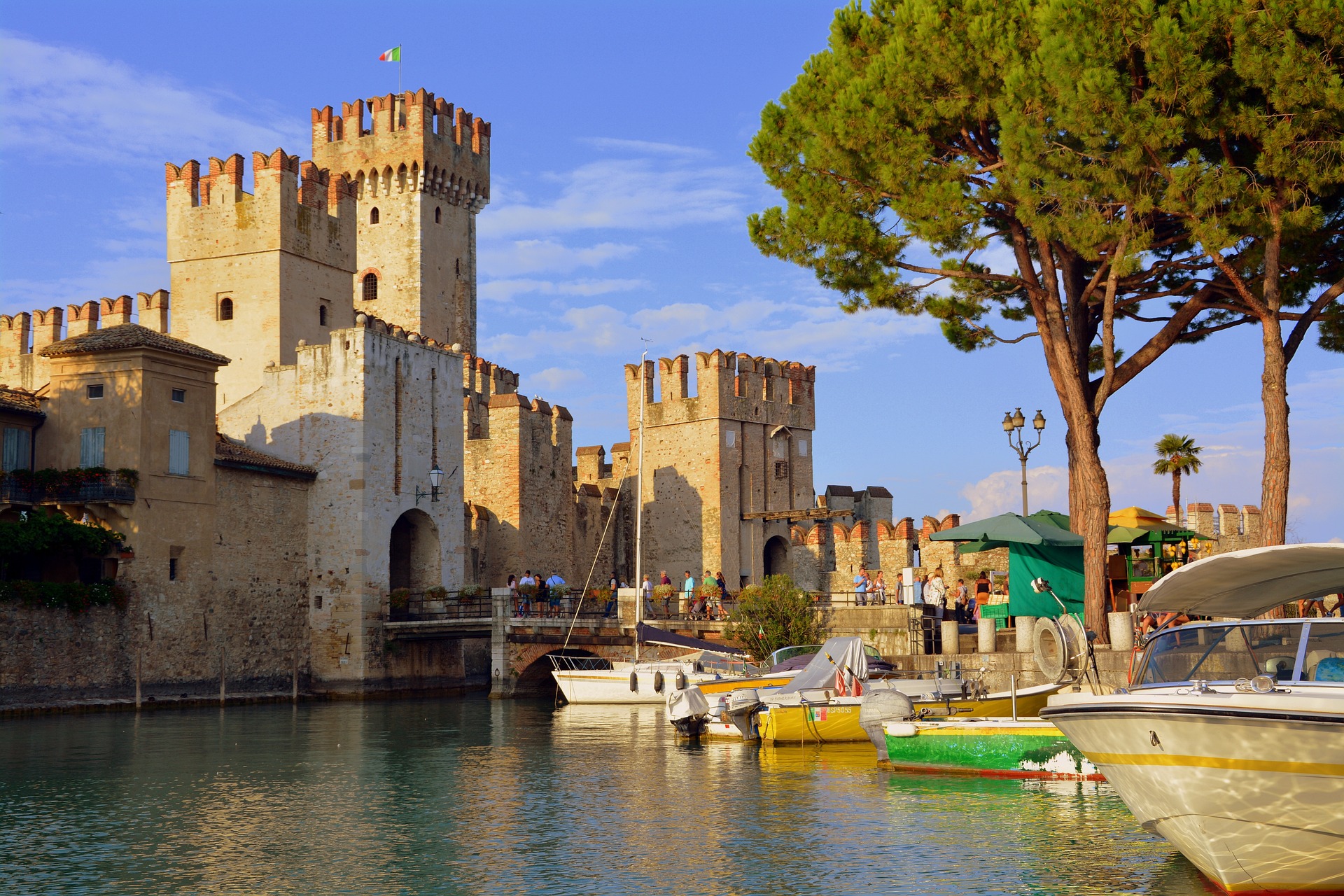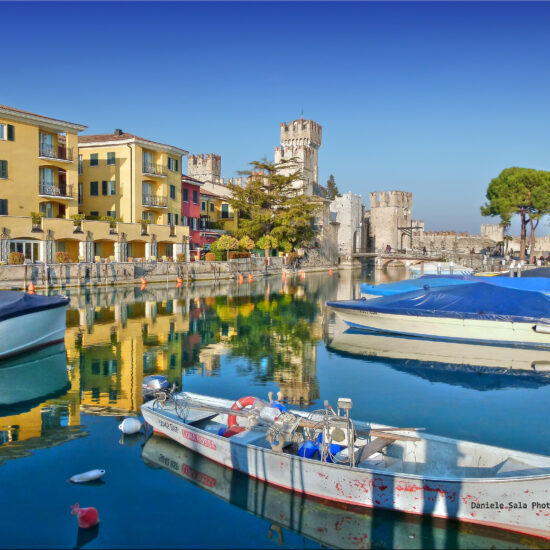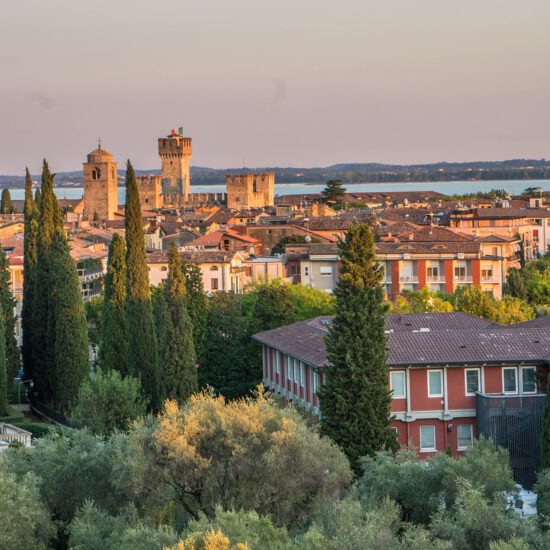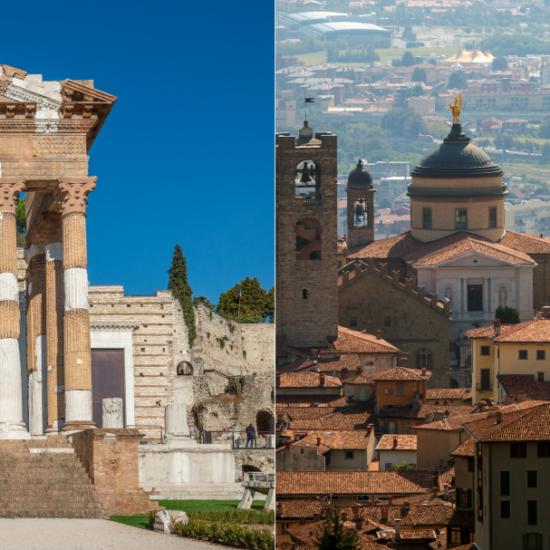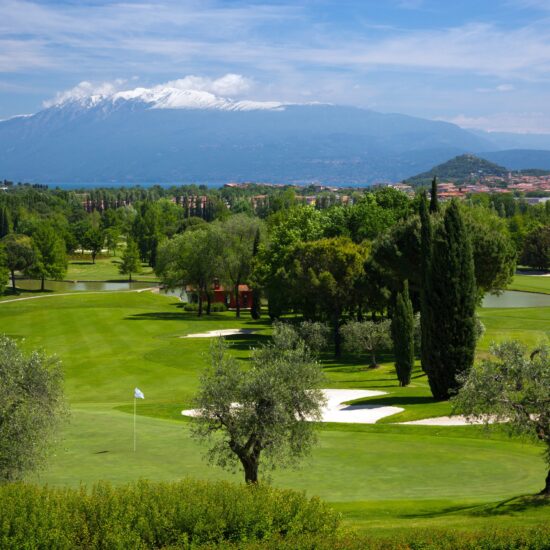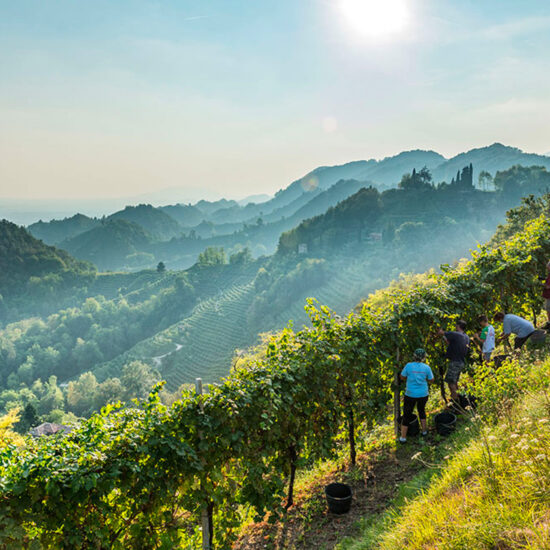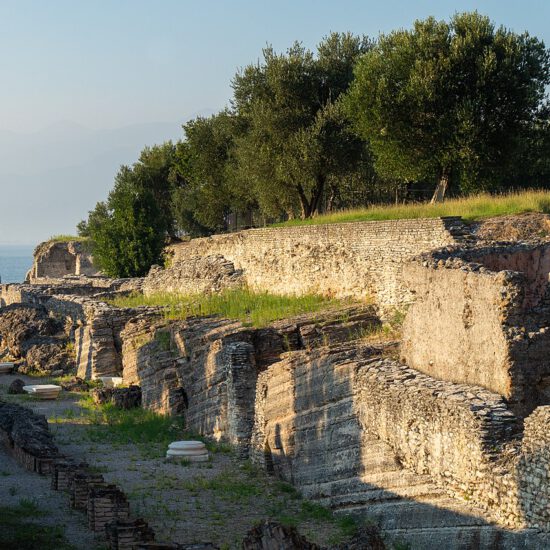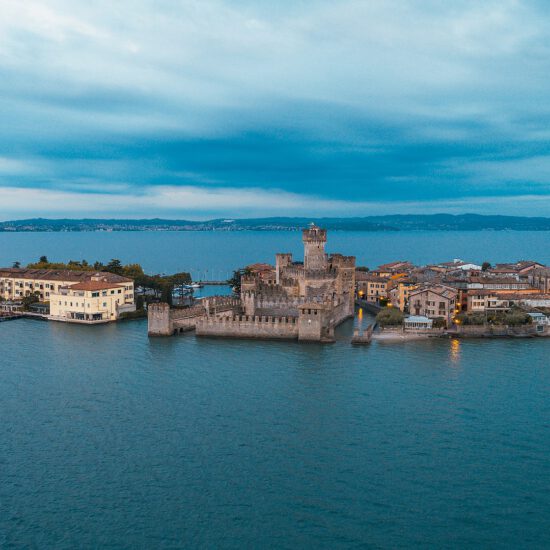Sirmione, the pearl of Catullus
History, thermal baths and poetry
«With what joy and happiness I see you again
Sirmione, jewel of the peninsulas and islands,
among all those that the double Neptune welcomes
in clear lakes and vast seas!» (Catullo, Carme XXXI)
The historic Grottoes of Catullus represent the evidence of this well-known thermal resort. The imposing archaeological area can be visited on the farthest point of Sirmione peninsula, facing the whole Lake Garda basin. The area preserves the remains of an impressive Roman villa (II century A.D.), where different thermal spaces with the local sulphurous water rich in rich in salt, bromine and iodine are still visible nowadays. This very same water is feeding the current thermal baths and spas.
After two centuries of Lombardic domination (568-774 A.D.), the remains of which are visible in some churches and monasteries, Sirmione was subjected to the control of the city of Verona and its Signoria Scaligera -rule of the Family Alla Scala- (1197-1405 A.D.), in order then to become part of the Republic of Venice, as the emblems on the Scaligero Castle main entrance door show.
During the Medieval time, that same monument, together with its historic walls, represented the most important defensive fortification right at the entrance of the village. It is known as Rocca Scaligera (built between XIII and XIV centuries), an imposing castle surrounded by the waters of the dock, which is still well-preserved. An exceptional view can be enjoyed from the wall walkways and from the top of the main tower, at a height of 47 mt.
Venturing the narrow streets and the walls of the vibrant old town, romantic and evocative glimpses can be discovered, together with the pleasure of a valuable typical cuisine based on the three local production milestones: the delicate Garda DOP extra virgin olive oil, the local wines, with the renowned Lugana DOP among them, and some local lake fish varieties.
Sirmione is less than one hour away from Verona Valerio Catullo Airport and from Brescia and Verona train stations, by Autostrada A4 -A4 Motorway, Sirmione exit.
Lake Garda: the Mediterranean atmosphere at the foot of the Alps
«Lake Garda has four souls: in its northern part, lies the soul of a Norwegian fjord, with its deep blue waters, surrounded by mountains; in the eastern part the French Riviera stretches with its sinuous street facing the lake; in the western part the Amalfi Coast dominates, with galleries dug in the rocky walls overlooking the water; in the southern part, Lake Garda becomes a sea which stretches out towards the Po Valley». (Andrea Selva, A Mediterranean fjord: discovering Lake Garda, Repubblica online 10th June 2015)
The most striking feature of Lake Garda is its richness of cultures and experiences in an area of about 160 km. Bearing the precious Sirmione jewel in mind, it is possible to explore the historical stratification which has always characterised the human presence in this land by visiting the numerous villages bloomed on the coasts of this extraordinary lake. Here are some of the witnesses of this richness: Desenzano with its Roman Villa (I century B.C.), its Medieval Castle (XI century A.D.) and San Martino della Battaglia Tower from the Risorgimento (XIX century A.D.); Salò, remembered in the annals of history as the capital city of the Repubblica Sociale Italiana -Italian Social Republic- during WW2 and as birthplace of the famous luthier Gasparo da Salò (1540 – 1609), known as the first inventor of the violin; Gardone Riviera and its Vittoriale degli Italiani -The shrine of Italian victories-, a complex of buildings, streets, piazzas, gardens and rivers, together with an open-air theatre, desired by Gabriele d’Annunzio in 1921 in order to celebrate its memory of poet-soldier and the feats of the Italian people during WW1; Toscolano Maderno, with its traditional paper mills; Limone del Garda, whose peculiar climate conditions, so similar to those of the Mediterranean coasts, make it the ideal place for the cultivation of lemons; Moniga and all the other places on the Lake, rich in olive trees generating the Garda DOP EVO oil -Extra Virgin Olive oil-; the lands of the prestigious Lugana, Chiaretto Valtenesi and all the other wine designations vineyards which represent the true and real expression of these important territories.
From North to South, Lake Garda has the perfect features for any outdoor activity: bike tours for beginners and pros, hikes surrounded by nature and vineyards, trekking, golf, thermal baths and water sports are just some of the open-air activities Lake Garda offers.

